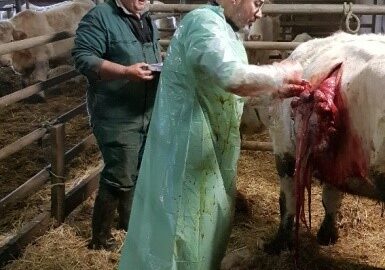Que penser de Moraxella bovoculi ?

Auteurs
Résumé
La kérato-conjonctivite infectieuse des bovins est un classique de la pathologie oculaire bovine. Il vient rapidement en tête Moraxella bovis comme agent pathogène pour lequel cohabitent diverses approches de prise en charge de l’affection et de thérapeutique (antibiotiques par voie générale ou locale, blépharorraphie, etc..). Pourtant il existe d’autres agents pathogènes à l’origine de kératite et conjonctivite, décrits dans la littérature, mais peu mis en évidence par manque d’examens complémentaires ou difficultés de mise évidence bactériologique (culture et identification). Le sujet de cet article est de rapporter un cas clinique, vu lors de visite terrain par le vétérinaire praticien confronté à des séries de kérato-conjonctivite sur des veaux ayant entrainé des interrogations sur les modalités de prélèvements et sur la réception d’un résultat d’examen bactériologique avec une bactérie… pas vraiment connue. L’objectif est de présenter la démarche du vétérinaire praticien, le lien établi avec le laboratoire et la conduite à tenir face à des connaissances nouvelles.
Abstract
Moraxella bovis quickly comes to the fore as the pathogenic agent, for which various approaches to disease management and therapy coexist (systemic or local antibiotics, blepharorraphy, etc.). However, there are other pathogens responsible for keratitis and conjunctivitis, described in the literature, but rarely identified due to a lack of additional tests or difficulties in bacteriological identification (culture and identification). The purpose of this article is to report on a clinical case seen during a field visit by a practising veterinarian confronted with a series of keratoconjunctivitis cases in calves, which led to questions about sampling methods and the receipt of a bacteriological examination result with a positive diagnosis of a bacteriological examination with a bacterium... not really known. The aim is to present the approach taken by the practicing veterinarian, the link established with the laboratory and what to do when faced with new knowledge.
D'autres articles
Découvrez aussi nos formations
15 décembre 2025
5 jours
Bovin laitier · Bovin viande · Bovins


